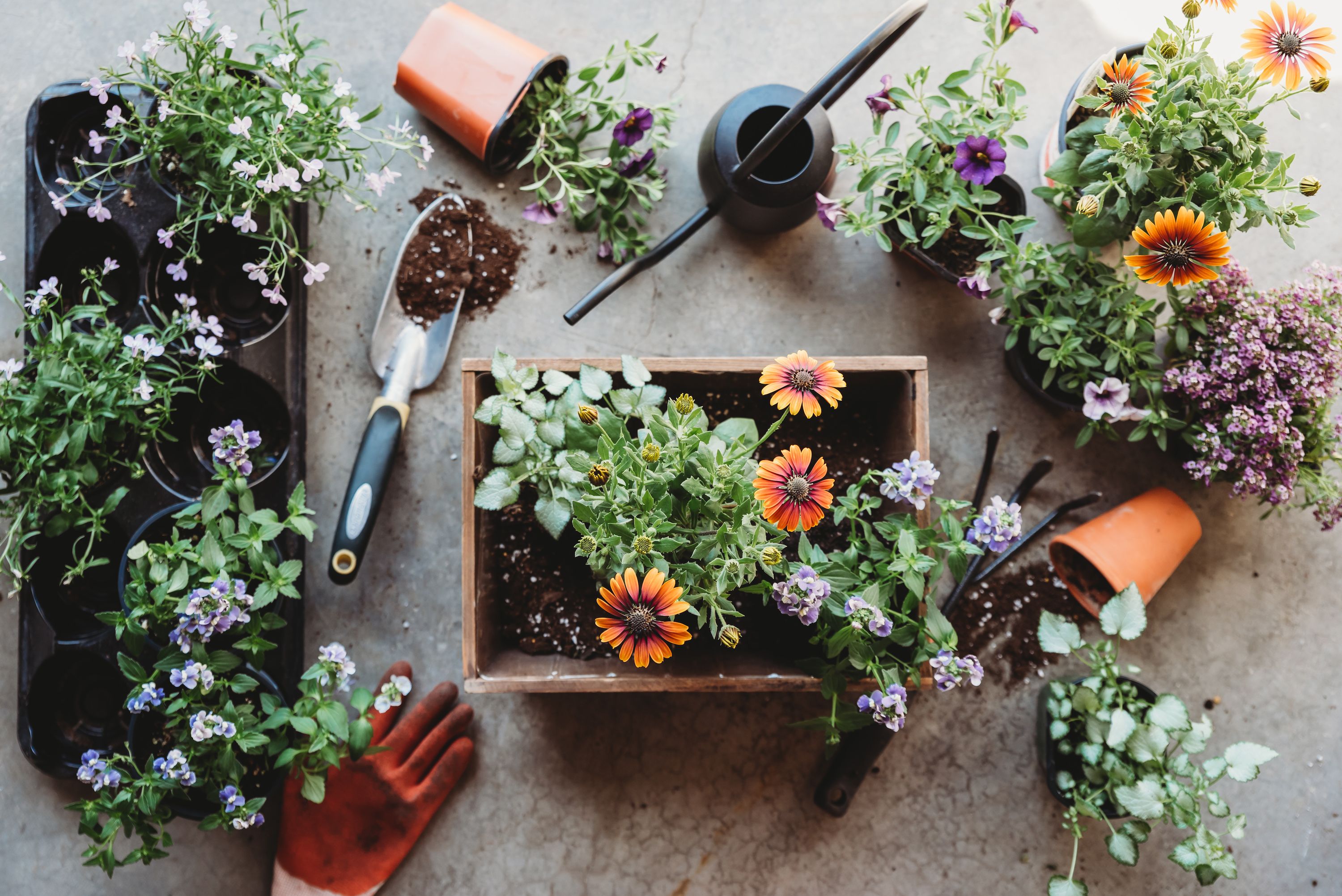Gardening 101: Structure Your Ultimate Gardening Kit for Beginners
Wiki Article
The Ultimate Overview to Horticulture for Beginners: Detailed Tips and Techniques for Growing a Flourishing Garden
From understanding your yard space to choosing the right plants and preparing the dirt, we have actually got you covered. Get prepared to unleash your green thumb and create a stunning, prospering garden.Comprehending Your Yard Room
To maximize your horticulture success, start by familiarizing on your own with the distinct qualities of your yard space. Recognizing your garden area is essential for creating a prospering yard. Begin by observing the amount of sunshine your garden gets throughout the day. Make note of any type of locations that are shaded and those that receive full sun. This will certainly assist you identify which plants will certainly prosper in each location.Next, assess the soil in your yard. Is it sandy, clay-like, or loamy? Recognizing your dirt kind will certainly guide you in picking the right plants and applying appropriate dirt modifications. In addition, consider the water drainage of your garden. Is it prone to waterlogging or does it drain pipes swiftly? This information will assist you make informed choices concerning watering and plant positioning.
These are small areas that may vary in temperature level or moisture levels contrasted to the remainder of your yard. Utilize these variations to your advantage by growing moisture-loving or heat-loving plants in these locations.
Picking the Right Plant Kingdoms

Do you choose low-maintenance plants or are you eager to put in extra effort for high-yield crops? Assume concerning the amount of time, power, and sources you are eager to invest in your garden.
Furthermore, think about the area readily available in your yard. Take dimensions and intend out the layout of your plants. Consider the mature size of each plant and make sure they have enough space to expand without overcrowding each various other.
Lastly, consider the functionality of your plant options. home gardening for beginners. Will you have the ability to give the necessary treatment and upkeep for your chosen plants? Think about aspects such as watering, fertilizing, pest control, and pruning
Preparing the Soil for Growing
When you have actually chosen the best plants for your flourishing garden, it's time to study the essential task of preparing the soil for growing. Prior to you start digging, it's crucial to assess the top quality of your dirt. Take a sample and test its pH degrees, as various plants flourish in different pH arrays. Change the pH if required by adding lime to elevate it or sulfur to reduce it.
As soon as the dirt check is prepared, create furrows or holes for growing. The deepness and spacing will depend on the particular requirements of your chosen plants, so refer to the seed packages or plant tags for assistance.
Finally, water the newly grown location extensively. This will certainly aid clear up the soil and provide the plants with the moisture they require to establish themselves. As you water, beware not to wash away the dirt or damage the delicate plants. With correct soil preparation, your yard will be fully equipped to support the growth and success of your plants.
Watering and Fertilizing Techniques
After preparing the dirt for planting, it's necessary to comprehend reliable watering and fertilizing strategies to guarantee the wellness and growth of your garden. It's important to strike a balance when it comes to watering. Overwatering can lead to root rot and other conditions, while underwatering can cause stunted development and wilting. The secret is to provide sufficient water to maintain the dirt regularly wet however not saturated. One means to evaluate if your plants require watering is by sticking your finger about an inch into the dirt. If it feels dry, it's time to water. When watering, go for the base of the plants, as wetting the leaves can motivate illness. When it comes to feeding, it's essential to provide your plants the nutrients they require to prosper. Organic plant foods, such as garden compost or well-rotted manure, are excellent choices as they offer a sluggish launch of nutrients. It's finest to use plant foods in very early springtime or late loss, adhering to the guidelines on the package. Remember to water your plants after fertilizing to help the nutrients reach the roots. By mastering these watering and fertilizing techniques, you'll be well on your way to a flourishing garden.Maintaining a Healthy And Balanced Yard
To keep a healthy and balanced yard, you should routinely examine your plants for signs of illness or insects. By doing this, you can catch any kind of concerns beforehand and take the needed steps to stop them from try here spreading out and triggering damages to your entire yard. Try to find any type of unusual areas on fallen leaves, yellowing or wilting foliage, or holes in the fallen leaves, as these could be signs of parasites or illness. If you observe any of these indicators, it is very important to take immediate activity.One way to deal with pests is by utilizing all-natural treatments such as insecticidal soaps or neem oil. These work in controlling usual insects like aphids, termites, and whiteflies without damaging helpful insects. One more technique is to urge advantageous pests like ladybugs and lacewings, which eat yard pests. Planting blossoms such as daisies, marigolds, and sunflowers will certainly attract these useful pests to your yard.
In enhancement to parasites, conditions can also impact your plants. Correct spacing in between plants and great air flow can also help prevent the spread of diseases.
Conclusion
Finally, horticulture can discover this be a fulfilling and meeting pastime for novices. By understanding your yard room, choosing the right plants, preparing the soil, and implementing correct watering and feeding methods, you can create a growing yard. Remember to keep its health and wellness by consistently often tending to it. With patience and devotion, you'll quickly be delighting in the elegance and bounty of your very own prospering yard. Happy horticulture!Use these variations to your advantage by growing moisture-loving or heat-loving plants in these locations.
:max_bytes(150000):strip_icc()/102683249_preview-2000-be230cf7d0f7407587bf77003132f539.jpg)
Report this wiki page